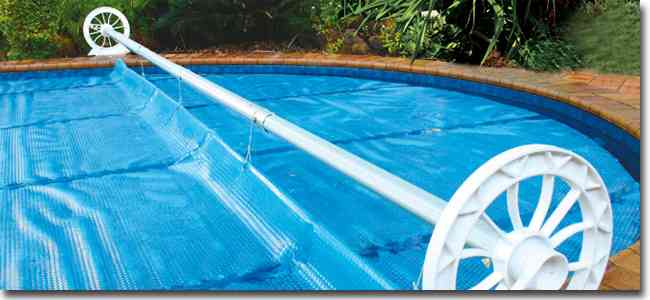You’ve enjoyed using your pool through the warm summer months, but Fall signals the time to think about covering your pool and making it secure. Maybe you’re looking to replace the security cover you now own and wondering what options are available. Listed below are the main types of swimming pool covers and the pros and cons of each one.
Standard Winter Covers
Standard Winter covers do a good job of keeping out sunlight which means less maintenance in the Spring, as well as other debris. Made of a tarp like material, it’s held in place with water bags, have a short lifespan and need replacing every 1 to 3 years. Their other drawback is the hold very little weight so it’s necessary to keep a watchful eye and a pump is needed to reduce the amount of rainwater buildup and prevent a cave in. They also don’t provide security from a dog or other small animal falling in and can’t support the weight of a person trying to walk across them. Another drawback is standard covers can be difficult to find for 7 months of the year and are not as aesthetically pleasing.
Security Covers
The majority of pool owners utilize this type of pool cover which resembles a trampoline and are held in place with spring loaded straps. Also available in a mesh type of material which will not require a pump because rainwater or melted snow just passes through it. The downside with the mesh material security cover is when pool season starts your water will be dirtier than with one constructed of solid material. Covers made of solid material do not last as long however, and the need for a pump that needs replacing at some point is an extra expense to consider.
Automatic Covers
Automatic covers come in many different forms and so have a very broad price range, on the plus side, they have wonderful solar ability and provide absolute protection against unwanted guests/swimmers. Unwanted debris or leaves pose no problem with this type of cover, reducing the amount of maintenance needed. Made of a kind of vinyl they tend to wear out after about five years the material tends to be pricey to replace. Almost too efficient in it’s solar ability pool water can end up heated to a temperature too warm for swimming with these covers. By far the biggest drawback is their tendency to break down, which can cancel out the convenience they provide. In regions of the country that experience heavy snowfall their inability to support the weight causes the cover to cave in.
Each type of cover has its own pros and cons including price and durability to consider when choosing what type works best for the homeowner.
